Japanese Modernism Across Media
Conversation with the Past
Nihonga versus Yōga
In order to understand how Matsui is combining and subverting elements of both nihonga and yōga into her works, it is important to understand a brief history of how the two forms came into existence, and the role they have played in Japanese politics and nationalism.
The origins of nihonga lie in Meiji Period Japan as a way to denote "the painting particular to Japan, or wagakuni koyū no ga" in opposition to Western-style painting, yōga.1 While at first yōga was the more popular of the two groups, being seen by the government as the most efficient way to modernize,2 nihonga quickly took over as the dominant nationalist form of painting once it became clear that rather than being impressed with Japan's enthusiasm for oil painting, Euro-America was dismayed at what they arrogantly viewed to be the destruction of Japanese culture at the hands of Western Imperialism.3
Nihonga, then, was created in response to a perceived loss of Japanese cultural identity. Championed by American philosopher and art collector Ernest Fenollosa and his disciple, Okakura Tenshin, the two men sought to create a style of painting that would herald back to the traditional motifs and styles of Japanese painting – which Fenollosa considered superior to those of its Western counterpart – while at the same time incorporating modern styles and themes introduced from Western painting.4
As Chelsea Foxwell explains, due to its creation as an opposition to Western models of painting, nihonga was truly a product of the Meiji Period; a marker that was utilized to define what was imported and what was inherited in Japanese painting, and to preserve cultural forms that were perceived as being under siege by rapid Westernization. As such, “nihonga in the twentieth century and beyond came to occupy a theoretically and historically ambiguous position as a category of artistic production located between the modernist act of creation and the impulse toward preservation or reenactment of the techniques, formats, and social functions of past Japanese painting.”5
Thus, the genesis of nihonga was also driven by a quest for authenticity, as well as a desire to not only stand beside yōga but, in many ways, to eclipse it as the national art form.
1. Chelsea Foxwell, "'Merciful Mother Kannon' and Its Audiences," The Art Bulletin 92, no. 4 (2010): 326. ↩
2. Mikiko Hirayama, "Ishii Hakutei on the Future of Japanese Painting," Art Journal 55, no. 3 (1996): 57.↩
3. Chelsea Foxwell, "Japan as Museum? Encapsulating Change and Loss in Late-Nineteenth-Century Japan," Getty Research Journal, no. 1 (2009), 49. ↩
4. For a more in-depth look at the role that Okakura Tenshin and Ernest Fenollosa played in the creation and dissemination of nihonga, see, Victoria Weston, Japanese Painting and National Identity: Okakura Tenshin and His Circle (Ann Arbor, MI: Center for Japanese Studies, University of Michigan, 2004). ↩
5. Foxwell, "'Merciful Mother Kannon' and Its Audiences," 326. ↩
Contemporary Nihonga
As Chelsea Foxwell notes in her essay on the status of nihonga in the world of contemporary art, from the late Meiji Period to the turn of the twenty-first century, “nihonga’s look and style has remained remarkably consistent.” 6 Since its inception, nihonga has existed in a state of anxiety, with painters and critics alike repeatedly predicting its inevitable demise. Over the years nihonga has been viewed as both being “anachronistic” in its opposition to Euro-American modernism, and as being overshadowed by the fear of loss which generated its inception. 7 In addition, Japanese artists have critiqued nihonga for its implicit themes of Japanese nationalism and its lack of “social and intellectual self-consciousness.” 8 As Foxwell notes, “because [nihonga] was constantly in the position of articulating its relationship with respect to East Asian painting of the past, it also provoked contention over which portions of the past were the most suitable embodiments of Japan.” 9
Thus, as a movement of art that was initially defined through the use of modern techniques to look backward and emulate traditional motifs, an artist’s choice of subject in a nihonga work sends a political message of what subjects and themes should be valued most. As an artist who challenges the status quo and states that she is unable to depict men in her art, this exhibit will show the various ways Matsui is able to confront and subvert the problematic motifs nihonga has historically valued.
6. Chelsea Foxwell, “The Painting of Sadness? The Ends of Nihonga, Then and Now,” ARTMargins 4, no. 1 (February 1, 2015): 28.↩
7. Ibid., 29-41. ↩
8.Ibid., 51. ↩
9. Ibid., 41.↩
Matsui's Process
Matsui is already pushing the boundaries of her medium, combining both methods from yōga and nihonga in order to give her paintings a unique look that is not replicable by any other artist. In the sketches above, Matsui Fuyuko illustrates the piecemeal process of how she creates each work of art.
Matsui's process is as follows:
- Kojita-e, a series of small compositional sketches
- Shitazu, a small detailed drawing
- Ōshitazu, a detailed underdrawing at full size10
First, Matsui creates a series of separate pencil sketches of each object. In the example provided here, that would be the girl, the wisteria petals, the tree, and then the hornets. Next, Matsui cuts each sketch out and experiments with their placement. Once she is satisfied that everything is where it needs to be, the smaller images are enlargened into an underdrawing of full size, before the final underdrawing is completed which is then "transferred to the final painting in color on silk support."11
This process allows Matsui to play around with light, shading, and depth, choosing how much of each element she wants to include in order to still utilize her background in yōga without compromising the key flatness that makes up nihonga
10. Sae Yatsuyanagi, “Matsui Fuyuko – The Artist and the Art,” in Matsui Fuyuko: Becoming Friends with All the Children in the World (Matsui Fuyuko: Sekaijū no ko to tomodachi ni nareru) 松井冬子展: 世界中の子と友達になれる, ed. by Matsui Fuyuko, Brian Amstutz, and the Yokohama Art Museum (Tokyo: Edition Toreviru, 2011), 11. ↩
11. Ibid. ↩
Supernatural Imagery
Lastly, it is important to touch on the supernatural themes and imagery also present in Matsui's work. In the video below, Matsui answers question about her artwork and her relationship with pain, including why she enjoys drawing creepy women and supernatural creatures (often represented as dogs or crows) in her art.

![[Untitled] [Untitled]](https://ds-omeka.haverford.edu/japanesemodernism/files/square_thumbnails/96d5c326dc526c7e58e6e0767303e726.jpg)
![[Untitled] [Untitled]](https://ds-omeka.haverford.edu/japanesemodernism/files/square_thumbnails/aca6b8e6e4681a0b35b38fc36841ac51.jpg)
![[Untitled] [Untitled]](https://ds-omeka.haverford.edu/japanesemodernism/files/square_thumbnails/8cc7718f39c3cd30e13dee4c17c28fd9.jpg)
![[Untitled] [Untitled]](https://ds-omeka.haverford.edu/japanesemodernism/files/square_thumbnails/29efa863160c3ac56e03d1299a470574.jpg)
![[Untitled] [Untitled]](https://ds-omeka.haverford.edu/japanesemodernism/files/square_thumbnails/f06c441f6d488c8b613c5677b95cf4ec.jpg)
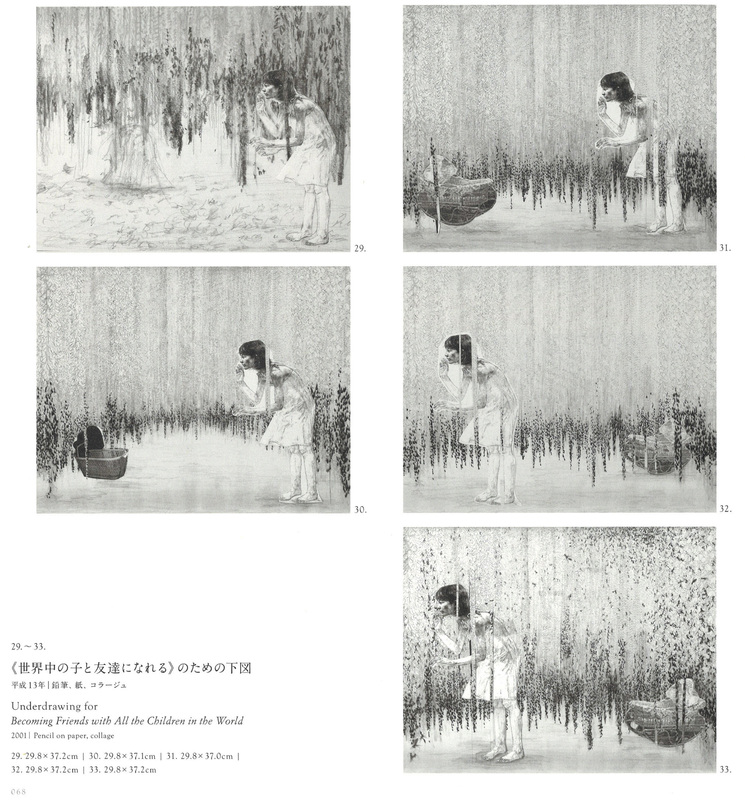
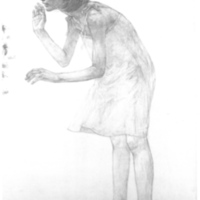
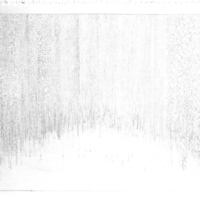
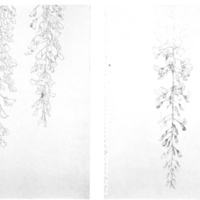

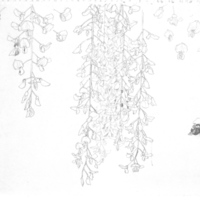
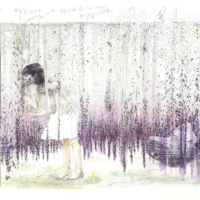
![[Untitled] [Untitled]](https://ds-omeka.haverford.edu/japanesemodernism/files/fullsize/119486a96cec56db36af0b6d0d381b7c.jpg)
![[Untitled] [Untitled]](https://ds-omeka.haverford.edu/japanesemodernism/files/square_thumbnails/ccf255b27e05e70948f1a8db7f64ac01.jpg)
